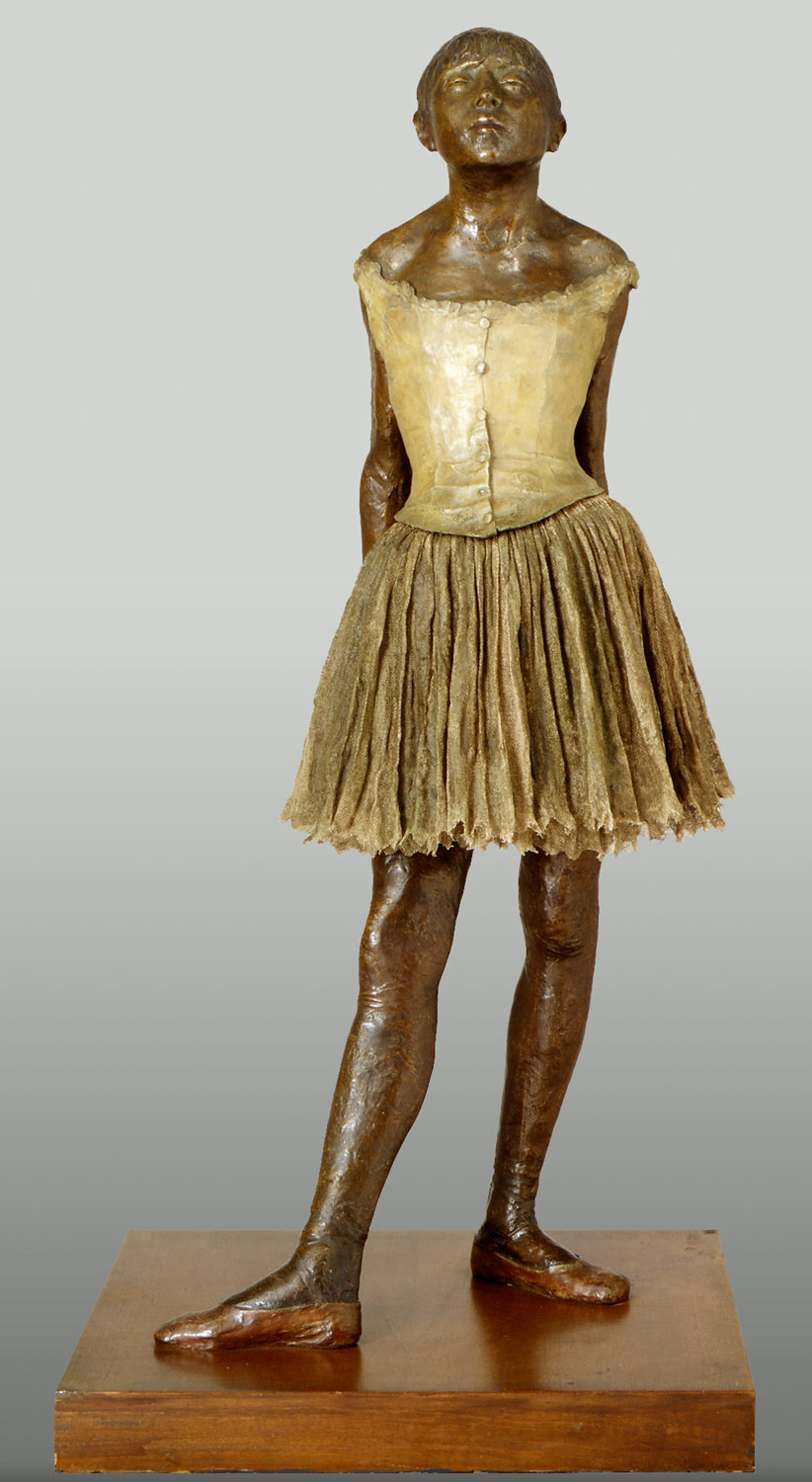Edgar Degas (1834-1917)
 |
| René de Gas (1855). Pencil. |
The work of Degas
reflects social ideologies, artistic influences, and personal interests alike.
His brothers and sisters often served as models for his beginning works; in
particular, his youngest brother René (René
de Gas, above). René was two years old when their mother passed away, and
it is hypothesized that Degas felt responsible for him. Numerous drawings of
René, as well as at least two paintings, date from the 1850’s. This study drawing depicts René, with eyes
gazing up in a longing expression, which artists have said may be intended to
impart wonder about the mother he never knew. This portrait is also said to be
influenced by Hans Holbein the Younger, from The Artist’s Family, serving as the inspiration for the expression.
Degas was quite interested in facial expression and feelings, often showing
variations in his portraits such as his famous brothel monotypes in addition to
his study works of the face.
Degas completed over 1500
paintings and pastels in his lifetime, as well as several thousand drawings,
prints, and monotypes. His career is often described in three parts: a copyist
and history painter from the mid-1850’s to mid-1860’s, followed by two decades
of Naturalist and Impressionist influences, and finally, a period from the
1890’s on of which little is understood. His art was largely self-taught
through copying the paintings and perspectives of other artists in his younger
years. Degas travelled France and Italy to visit museums and print-rooms for
this purpose, as well as spending December 1858-March 1859 with Gustav Moreau,
a contemporary, copying in Florence. An example of a work from this period is a
High Renaissance piece, Botticelli’s Birth
of Venus, which they both copied (below). Another example of a copy from
this period of Mantegna’s Calvary:
Crucified Thief (c. 1853) shows his willingness to work outside the realm of the recognized
hierarchy of masters of the time.
 |
| Birth of Venus (c.1859). Pencil. |
 |
| Calvary: Crucified Thief (c. 1853). Pencil, red chalk. |
While his copy of Crucified Thief is an earlier copy and study drawing, it becomes
evident in The Birth of Venus Degas
has begun to adopt methodologies familiar to his own works. Degas was open to technical experimentation
and unconventional use of some medias as well; this is easily seen in his
well-recognized The Little
Fourteen-Year-Old Dancer (1880, cast 1992, bronze with cotton skirt and satin
ribbon).

Degas’ movement into Naturalist and
Impressionist styles is reflected in his participation in seven of the eight
independent exhibitions that brought Impressionism to prominence. He became
associated with this movement publicly from 1874 – 1886, though he did not
self-identify as such; Degas preferred labels such as “independent” or
“realist.” There are distinct differences between his work and those of better
known Impressionists, such as Monet, a primary one being his focus on the human
form and contemporary life as opposed to landscape. Similarly, his works during this time, though
maintaining an appearance of spontaneity, were actually quite methodical and
calculated. He embraced influences of photography and Japanese prints of his
time, to show a “slice of life” vision in his works.
From this period, Degas may be best known for
his ballet scenes, images he depicted for popular and market demand. Degas grew
up in a gender-striated society, where art traditionally constructed women as
objects of male desire. His depictions of women reflect these constructs,
though his interest was also in the graceful lines of movement and the costumes
the dancers donned. With his love of the arts and combined frequenting of the
Paris Opéra and Opéra Ballet, he found the side wings and dancers he would
paint for the rest of his career. He enjoyed painting the world of motion and
beauty, capturing asymmetry and the fluidity of the human body from various
vantage points. An example of one of his hundreds of paintings of the ballet is
below, Ballet Dancers in the Wings, 1900. Though this work depicts multiple dancers warming up, it has also been hypothesized to in fact be a single girl, diagonally depicted in her alterations of movement.
 |
| Ballet Dancers in the Wings, 1900. Pastel. |
The works of Degas are still heavily admired to this day.
I chose to write about Degas because of my time in Paris. I had the
opportunity to visit not only the Louvre, but the Musée d’Orsay and Giverny as
well. Impressionism is my favorite artistic movement, and I enjoyed being able
to study it through my art history course and my visits to museums. I found it
quite interesting to discover that Degas himself did not wish to be fully
considered an Impressionist, and moreover, that he spent such a portion of his
life working from observation as we are doing now, and sketching nonetheless. I
appreciated all the examples of mediums he worked with that I came across in
this research, and being able to visualize some of the originals that I
observed while in Paris.
Boggs, Jean
Sutherland., and Edgar Degas. Degas.
Chicago: Art Institute of Chicago, 1996. Print.
Broude, Norma. Edgar Degas. New York, NY:
Rizzoli Internatioal Publications, 1993. Print.
"Edgar Degas." Biography.com. A&E Networks
Television, 08 July 2014. Web. 11 Feb. 2017.
Pedersen, Line
Clausen., Elizabeth Steele, and Edgar Degas. Degas'
method. London, U.K.: Black Dog Pub., 2015. Print.
Thomson,
Richard. The Private Degas.
London: Herbert, 1987. Print.
No comments:
Post a Comment